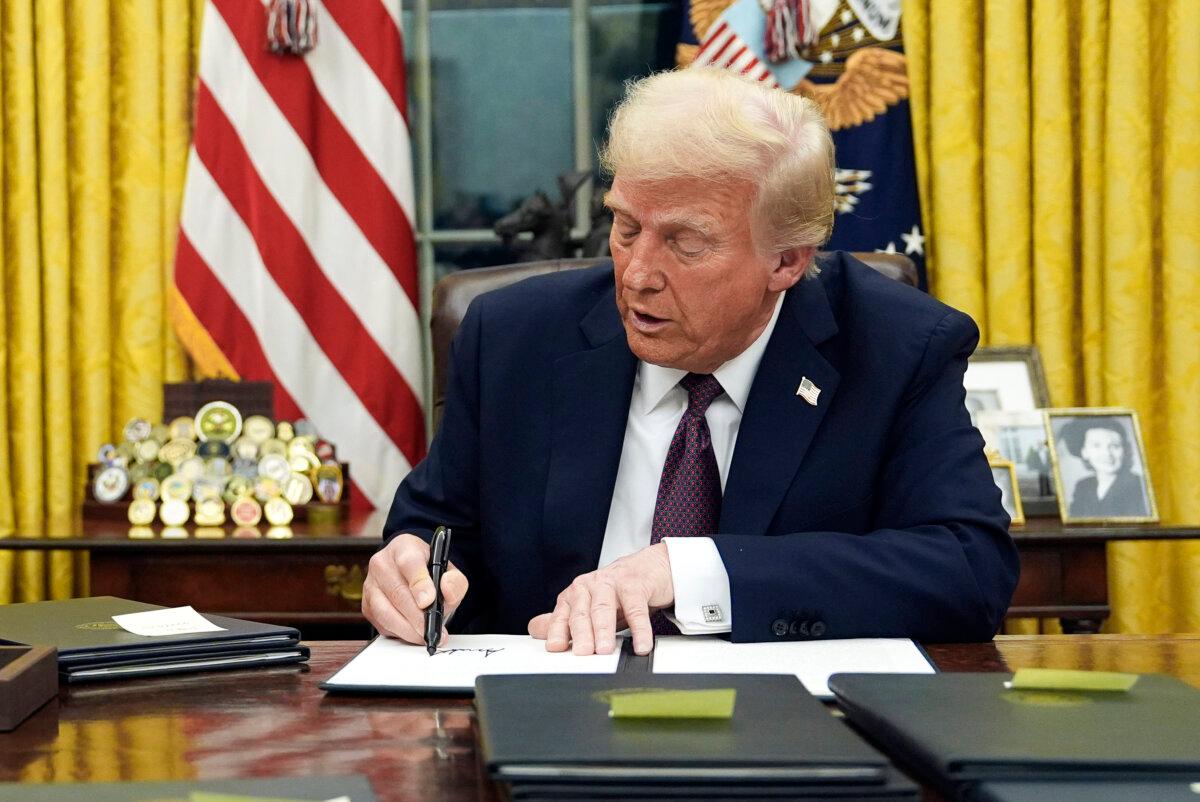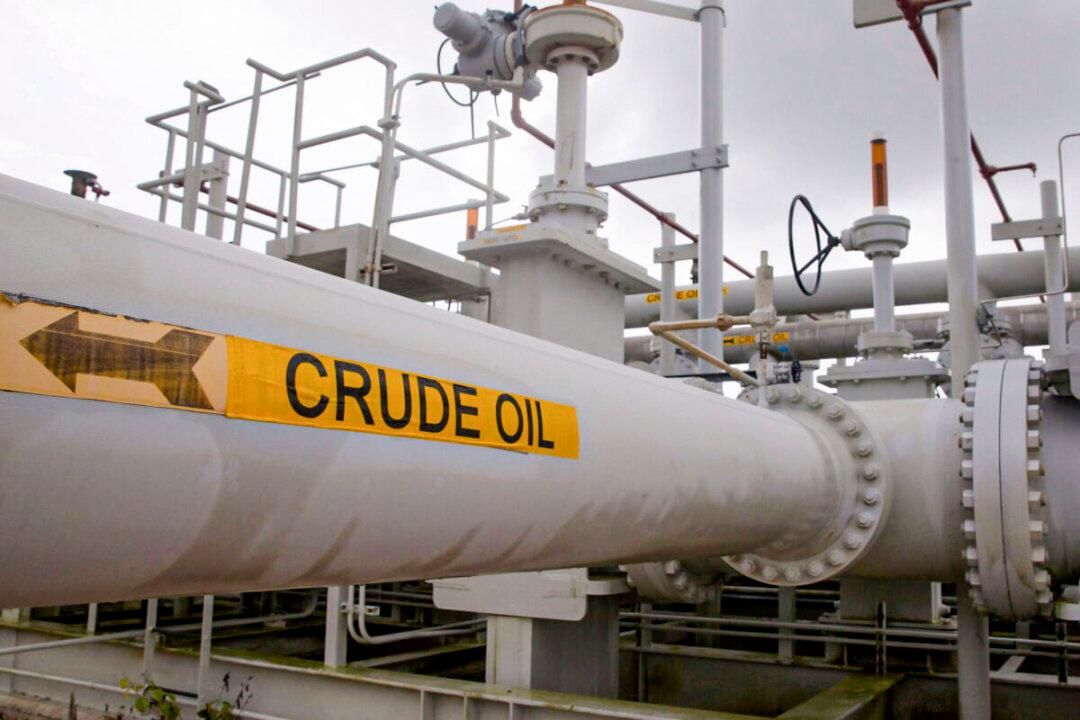West Texas Intermediate (WTI), the U.S. benchmark for oil prices, declined by as much as 2.5 percent to below $76 per barrel on the New York Mercantile Exchange.
U.S. oil prices have risen 5 percent this month.
Brent, the global benchmark alternative, struggled to hold $79 on Jan. 21. Brent crude prices tumbled about 1.5 percent to below $79 a barrel on London’s ICE Futures Exchange. Brent has also climbed around 5 percent to kick off 2025.
International markets are preparing for the Trump administration to unleash American energy, revamping U.S. oil and gas policy, says Phil Flynn, an energy strategist at The PRICE Futures Group.
“Policy shifts that would enable new oil and gas development on federal lands, while directing a rollback of Biden-era climate regulations.”
The move, the president said, would slash red tape and regulations, boost exploration and output on federal lands, and push heads of federal agencies and departments to identify emergency authorities to expand production.
“That’s a big one,” the president told reporters at the White House as he was signing many different executive orders hours following his inauguration.
“That means you can do whatever you have to do to get out of that problem. And we do have that kind of an emergency.”
The executive order titled “Unleashing Alaska’s Extraordinary Resource Potential” would expedite permits and leases and enhance the development of the state’s liquefied natural gas (LNG) projects, increasing energy development on federal and state lands.
The United States is currently the world’s largest natural gas producer and exporter.
Last year, the United States exported a record 20.9 billion cubic feet per day, up 10 percent from the previous year.
“Arguably, natural gas is going to be the lion’s share of energy’s dominance from the U.S. perspective at least over the next four years,” said Brian Kessens, the senior portfolio manager at Tortoise Capital, in a note emailed to The Epoch Times.
The storage surplus has been sliding in recent weeks as frigid temperatures have blanketed much of the United States, boosting home heating demand.
In addition, Trump signed orders reversing President Joe Biden’s restrictions on oil and gas drilling in large areas of Arctic and U.S. coastal waters. He also withdrew the United States from the Paris Climate Agreement, a global pact to limit rising global temperatures to 1.5 degrees Celsius.
The United States will “probably” stop purchasing oil from Venezuela, Trump said.
Emergency Stockpiles and Tariffs
In his inaugural address, the 47th president vowed to replenish America’s emergency crude oil stockpile, the Strategic Petroleum Reserve (SPR).Trump said these orders will help reduce consumer energy prices and restore price stability in the broader marketplace.
“The inflation crisis was caused by massive overspending and escalating energy prices and that is why today I will also declare a national energy emergency. We will drill, baby, drill,” Trump said in his inaugural address.

“We will bring prices down, fill our strategic reserves up again right to the top, and export American energy all over the world.”
Efforts to quickly replenish the SPR would likely lift oil prices, says Ipek Ozkardeskaya, a senior analyst at Swissquote Bank.
“In the short-run, the impact from replenishing the strategic reserves could outweigh [because doing that would withdraw oil from market quickly], while increasing production takes time,” Ozkardeskaya said in a note emailed to The Epoch Times.
She said that administration officials would likely advise Trump to act slowly since the newly inaugurated president aims to lower energy prices.
While Trump signed a presidential trade memorandum, the president stopped short of imposing universal tariffs on all U.S. imports, which would potentially include oil from Canada and Mexico.
He confirmed that he might slap 25 percent tariffs on Canada and Mexico on Feb. 1 over border security.
According to Tu Nguyen, an economist at RSM, if tariffs are applied on crude oil, they would impact approximately 4.5 million barrels of daily U.S. oil imports. In the short term, the United States would find it difficult to source this amount of oil.
“Energy tariffs would cause gasoline, electricity, and heating costs to jump, affecting businesses and consumers alike.”
David-Alexandre Brassard, the chief economist at CPA Canada, says possible tariffs and retaliatory measures could “threaten to destabilize both economies.”
“Canada’s trade surplus in energy products—such as oil, gas, and electricity—would be directly impacted, causing disruptions that would ripple through the U.S. economy as well,” Brassard told The Epoch Times in an email.
Trudeau says because Trump aims to usher in a “golden age of America,” Canada will have some leverage. He stopped short of listing potential responses.
“Everything is on the table, and I support the principle of dollar-for-dollar matching tariffs,” Trudeau said.
Market watchers have questioned if easing burdensome regulations will be enough to facilitate growth in energy output.
Mark Malek, the CIO at Siebert Financial, said that the “drill, baby, drill” mantra uttered in President Trump’s inaugural address ”was a painful shriek” for many energy insiders.
“Adding energy supply will push prices down,” Malek said in a note emailed to The Epoch Times. “While this is ultimately good for inflation as a whole, and ultimately consumers, it is a problem for energy companies, whose margins will be pressured.”
Other Reasons for the Price Drop
Yemen’s Houthis will no longer attack U.S. and United Kingdom commercial tankers in the Red Sea, the Humanitarian Operations Coordination Center (HOOC) said.Houthi forces will limit their targets to Israel-linked ships.
This is positive news for the energy and shipping industries, as companies have diverted their vessels from the Red Sea and traveled around southern Africa to avoid attacks.







